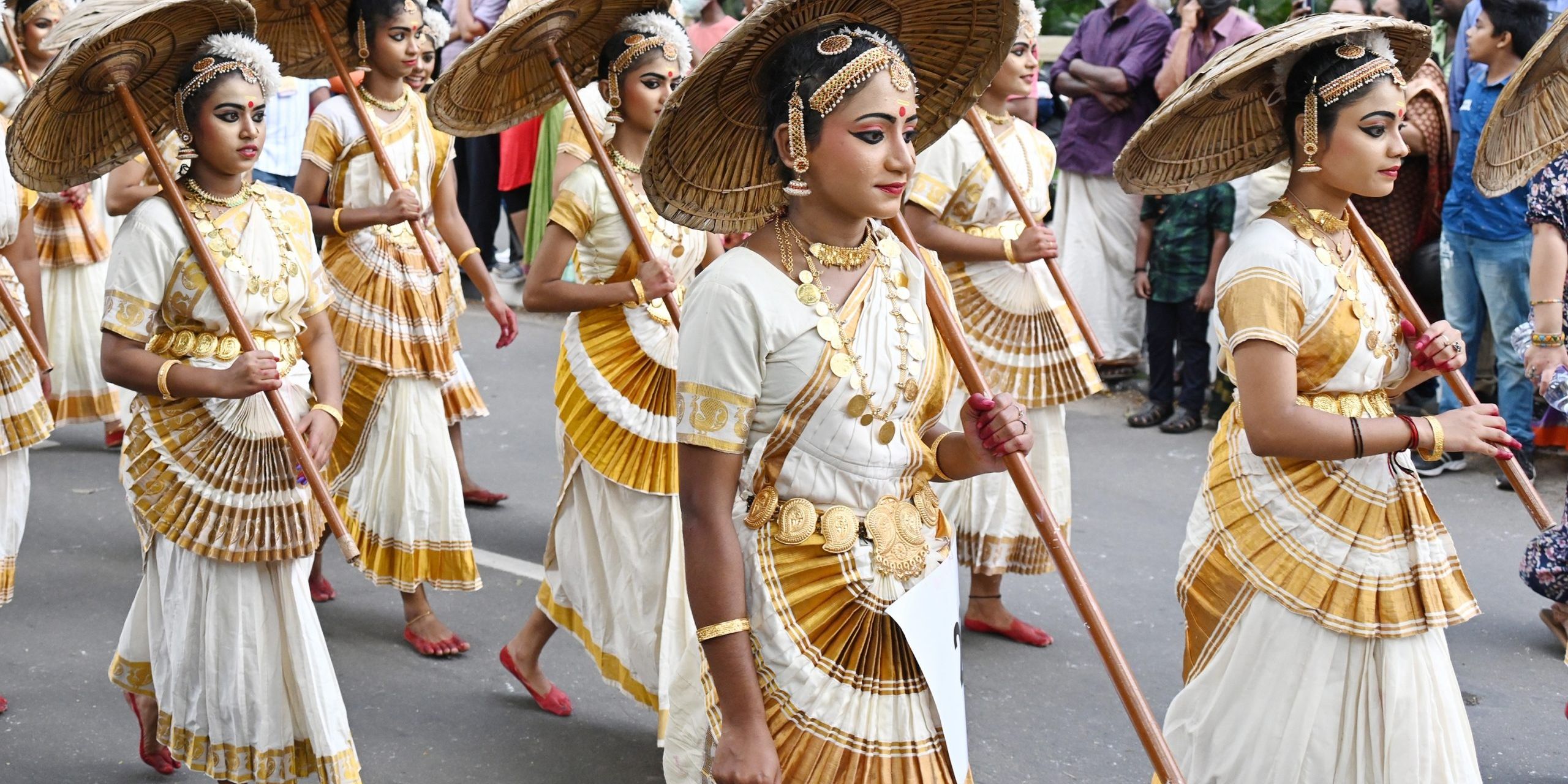A Shimmering Legacy: The Kasavu Mundu Neriyathu of Kerala

In the heart of Kerala, where coconut palms sway to the rhythm of the ocean breeze, lies a shimmering testament to the region's rich textile heritage: the Kasavu Mundu Neriyathu. More than just attire, it's an embodiment of purity, prosperity, and a deep-rooted connection to the past. Its pristine cream color, a symbol of sanctity, whispers tales of ancient rituals and traditions. The glistening kasavu, the golden border that frames this elegant drape, speaks of auspicious beginnings and echoes the prosperity it once represented.

A close-up shot of the kasavu (golden border) of a Mundu Neriyathu, showcasing the intricate details of the zari work
Deeply intertwined with Kerala's cultural fabric, the Kasavu Mundu Neriyathu graces every significant occasion. Picture the vibrant celebrations of Onam and Vishu, the air thick with the fragrance of jasmine and the rhythmic beats of traditional music. See the bride, radiant in her kasavu-adorned wedding attire, a symbol of new beginnings and enduring love. Feel the reverence of religious ceremonies, where the Mundu Neriyathu connects the wearer to a legacy of faith and devotion. It is in these moments, woven into the tapestry of life, that the true significance of this garment becomes profoundly clear.
The Devanga community, the custodians of this ancient craft, reside primarily in the villages of Balaramapuram and Kuthampully. Their skilled hands, guided by generations of inherited knowledge, work tirelessly at the looms, preserving a tradition that has stood the test of time. The intricate weaving techniques, passed down through families, create the unique texture and drape that define the Kasavu Mundu Neriyathu. Imagine the rhythmic click-clack of the shuttles, a constant melody accompanying the meticulous process of weaving.

A Devanga weaver working on a traditional handloom
Historically, the kasavu itself was a marker of social status. Real gold zari (metallic thread), woven into the fabric, reflected the wearer’s affluence. While today both real gold and imitation zari are used, the association with prosperity and elegance endures. The Geographical Indication (GI) tag awarded to the Balaramapuram Kasavu Mundu and Set Mundu further solidifies its significance, protecting its authenticity and celebrating its unique craftsmanship on a global platform.

A group of women dressed in vibrant Kasavu Mundu Neriyathus during a festive celebration
By supporting this craft, we not only honor the artistry of the Devanga community but also contribute to their economic and social well-being. Each purchase sustains a vital cultural and economic ecosystem, ensuring that this shimmering legacy continues to illuminate generations to come. The Kasavu Mundu Neriyathu isn’t just a piece of cloth; it's a living story, woven with threads of tradition, artistry, and cultural pride.
What stories of Indian craft resonate with you? We invite you to share your experiences and become a part of the CraftYug storytelling community. Reach out to us at team@craftyug.com.
References:
- Traditions of Kerala, Kerala Tourism website
- The Loom of Kerala, DC Books, 2007
- Handloom Weaving of Kerala, Kerala State Handloom Development Corporation website
- Geographical Indications Journal, Government of India, 2008
- Traditional Costumes of Kerala, Mathrubhumi Books, 2010
- The Hindu, Article on Kerala Handlooms, 2015
- Economic Impact of Handloom Industry in Kerala, Report by Kerala State Planning Board